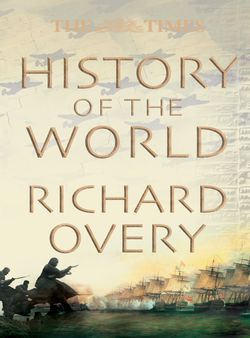Читать книгу The Times History of the World - Richard Overy - Страница 27
TO 1392 KOREA
ОглавлениеThe area now known as Korea was the mountainous eastern edge of the Eurasian continent until the Yellow Sea formed and the west coast emerged to define a peninsula. Peoples migrated into and through the peninsula to the islands. Chinese political culture and Buddhism followed on, and states emerged. With Chinese aid, one of three competing kingdoms conquered the peninsula, but instability led to anarchy by the late 9th century. The successful kingdom created a bureaucratic state with strong aristocratic characteristics and established a Korean identity.
During the last glacial maximum, “Korea” was high ground across a low plain (Yellow Sea) at the eastern end of Eurasia. Sea levels rose and a peninsula appeared between 14,000 BC and 6000 BC. Humans from 22,000 BC; villages from 10,000 BC; rice between 6000 and 4500 BC. Bronze was worked from 1000 BC and dolmens appeared.
By 108 BC, the Han Empire had established colonies to trade for iron. Only the Lelang colony near Pyŏngyang survived until AD 313, when it was destroyed by a tribe from the middle reaches of the Yalu River, the Koguryo, who first revolted against the Chinese in AD 12. Over several centuries, the south politically evolved into Paekche in the southwest, Silla in the southeast, and the iron-rich principalities of Kaya in between.
By the 6th century, the peninsular states were importing Chinese law, bureaucratic government, and land was monopolized by the state to centralize power. Koreans and Japanese fashioned compromises between the Chinese ideal of centralization and the native system of aristocracy, which resulted in semi-centralized political orders based on inheritance. Buddhism permeated every corner of the peninsula by 540 and was exported to Japan.
An alliance between T’ang China and Silla destroyed Paekche in 660 and Koguryo in 668. The T’ang had promised to withdraw but betrayed Silla, attempting to seize the whole peninsula. By 676, Silla drove T’ang out, demonstrating that outside powers were unable to succeed on the peninsula without a local ally. T’ang completely retreated, and a new state called Pohai (Korean Parhae, 712–926) formed in Manchuria from tribal elements and Koguryo refugees.
From the 8th century, northeast Asia saw peace: great cities, long-distance trade, and a cosmopolitan, state-oriented Buddhism. Kyŏngju, Silla’s capital, was a world city known to Arab traders. Ch’ang-an may have had nearly two million inhabitants, and Kyŏngju approached 900,000, swollen by slaves from the wars. Monks, merchants and diplomats wandered among Ch’ang-an, Kyŏngju, and Nara in Japan. Thereafter, “Korea” and “Japan” began to form separate identities.
Sillan central control lapsed, and in 918, Wang Kŏn, a general outside the old aristocratic order, emerged to found a new dynasty named Koryŏ. Wang Kŏn peacefully absorbed the Sillan court in 935. His successors inherited the aristocratic pretensions of Silla and the desire to centralize. During the 10th century, a bureaucratic state was created, with examinations, ideology, salary ranks and centralized provincial appointments. Where Silla had conquered, Koryŏ unified. In 1126, the Liao (Jurchen) destroyed the Chinese Song Empire and Koryŏ faced a dilemma of identity: take the opportunity to expand out of the peninsula or accept its limitations. A rebellious faction argued for continental destiny in Manchuria. Kim Pu-sik, the general who suppressed them, produced an official history (Samguk sagi, c. 1145) that defined Koryŏ’s heritage as peninsular. After the Mongols invaded in 1232, an unofficial history (Samguk yusa, c. 1283) reaffirmed a peninsular identity and recorded foundation myths.
Koryŏ nearly slipped into feudalism when abuse of civil privilege sparked a military coup d’etat in 1170. Military dictators did not create a new government, but ruled through the central government. Perhaps Koryŏ never disintegrated into feudalism because of the threat from northern barbarians, a threat Japan never faced. The Mongols invaded in 1232, but the Korean court resisted until 1270. The Koryŏ kings became sons-in-law to the Mongol Khans, and Koryŏ was press-ganged into supporting Mongol efforts to conquer Japan in 1274 and 1281. Both invasions failed.
From the mid-14th century, Japanese piracy appeared to ravage Korea. In the north, the Mongols weakened and, in 1368, the new Ming dynasty dislodged the Mongols. Indecision at the Koryŏ court over whether to support the Mongols or the Ming resulted in a coup d’etat in 1388 and a new dynasty, the Chosŏn, was founded in 1392.
